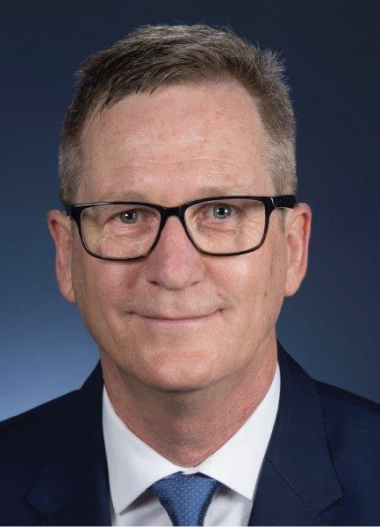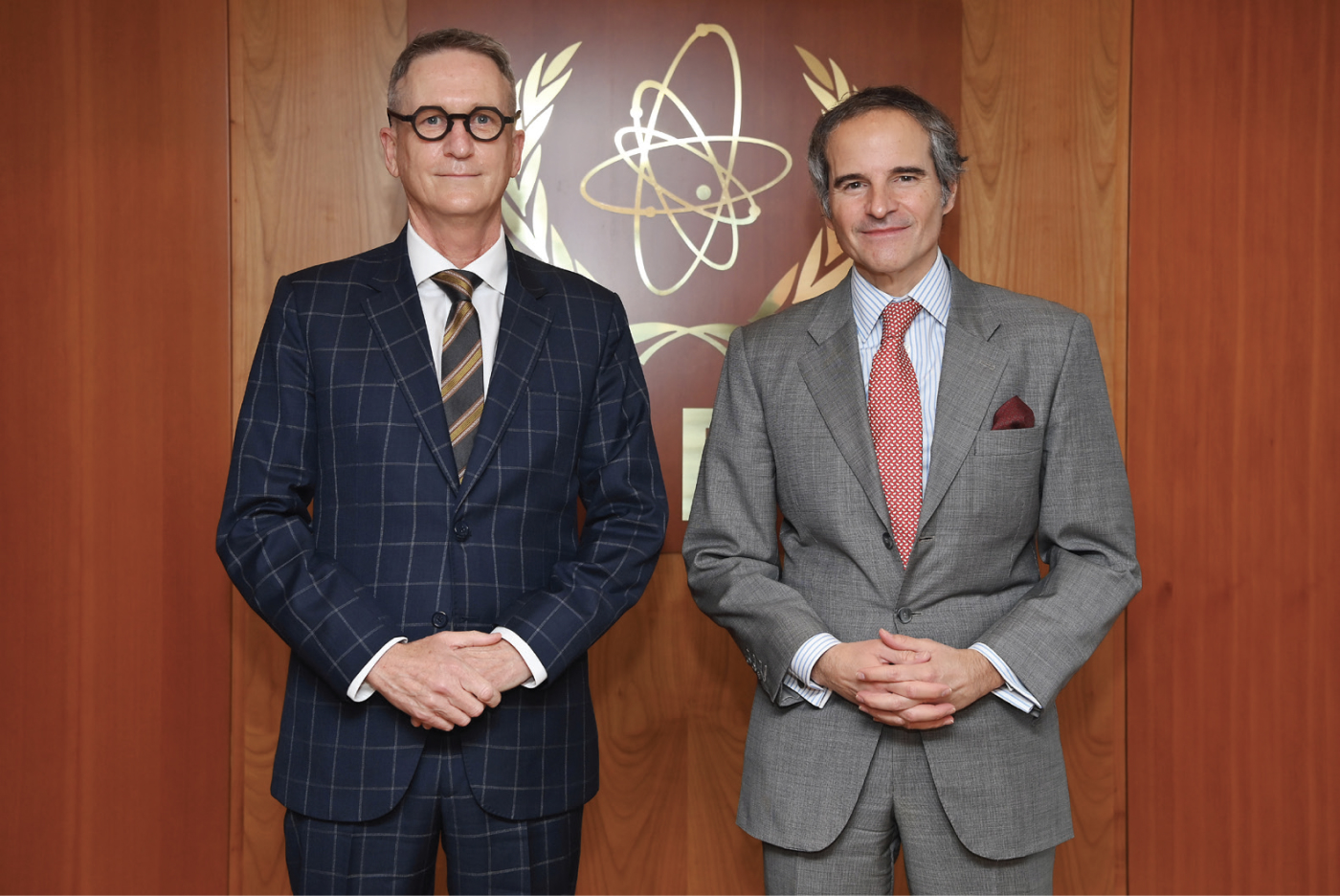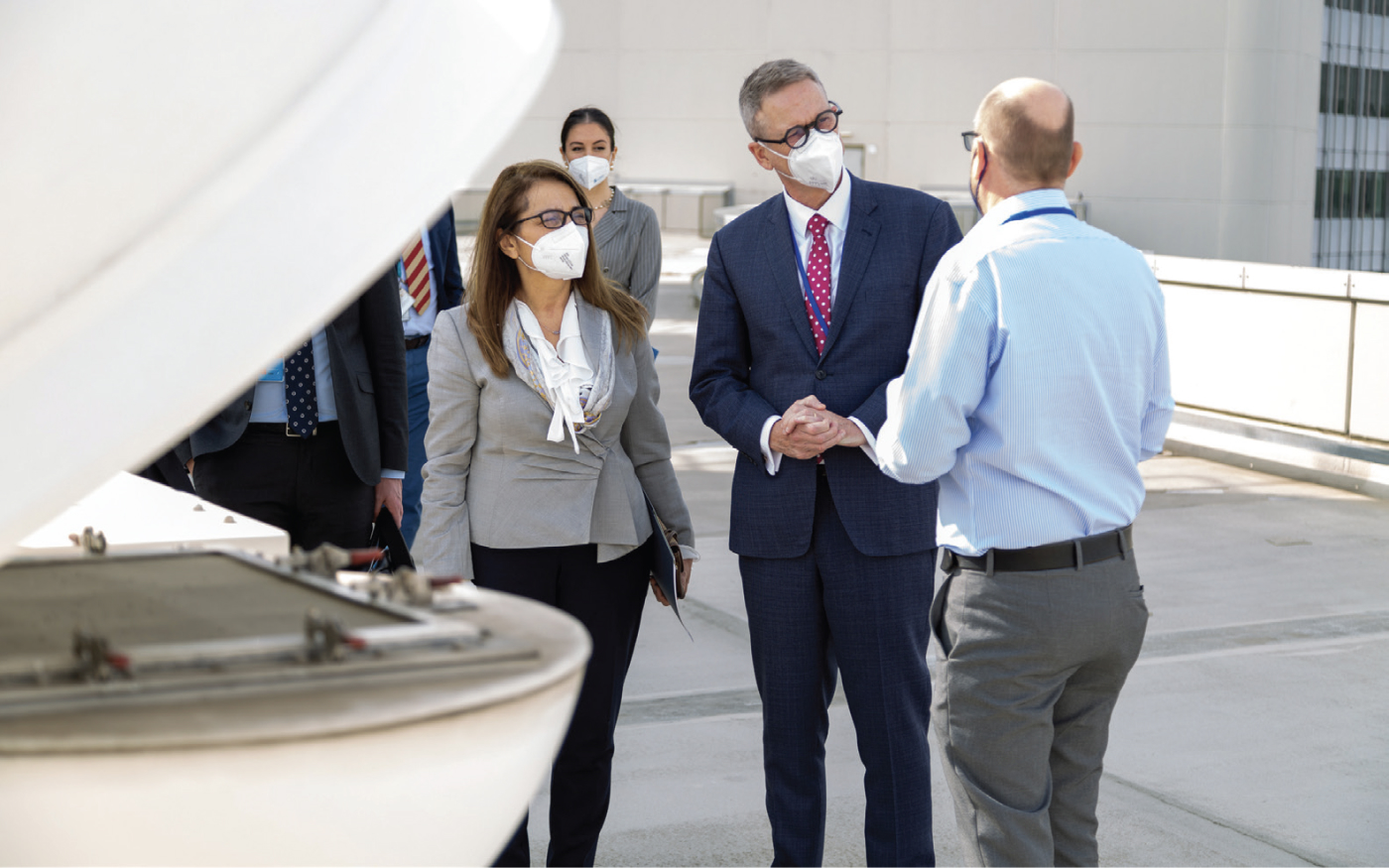
Dr Geoffrey Shaw
Director General
Australian Safeguards and Non-Proliferation Office
The Year in Review
The International Non-Proliferation Environment
New strategic tensions and global volatility have added to non-proliferation and disarmament challenges in the 2021–22 reporting period. Against this backdrop, the need for international collaboration is increasingly important if we are to realise the ultimate goal of eliminating chemical and nuclear weapons.
Russia's unilateral, illegal and immoral invasion of Ukraine has undermined international oversight of Ukraine's nuclear facilities, risking their safe and secure operation. Reports of military operations within or near Ukrainian nuclear facilities remain concerning. Ukraine continues to support IAEA activities where it can, but the seizure of territory and nuclear facilities by an invading power poses unprecedented challenges for its compliance obligations. For the second year, Ukraine did not receive the IAEA's broader safeguards conclusion1 because 'current circumstances prevent the Agency from verifying certain nuclear material'.
IAEA efforts to engage with Iran to implement the Joint Comprehensive Plan of Action (JCPOA), have been impacted by Iran's systematic reduction in cooperation. Issues around Iran's past compliance with its Comprehensive Safeguards Agreement remain unresolved.
The Democratic People's Republic of Korea (DPRK) has intensified WMD-related activity in 2022. Ballistic missile tests – including intercontinental ballistic missiles – have occurred with unprecedented frequency. Renewed activity at the Punggye-ri nuclear test site raises concerns that the DPRK may resume nuclear explosive testing.
Despite these challenges, the IAEA continues to effectively verify that States are upholding their respective nuclear non-proliferation commitments, using the tools available under safeguards agreements and under the Additional Protocol (where in place).
Australian Dr Robert Floyd (former ASNO Director General) commenced as Executive Secretary of the Preparatory Commission for the Comprehensive Nuclear-Test-Ban Treaty Organization (CTBTO) Preparatory Commission on 1 August 2021. The election of Dr Floyd is a strong demonstration of Australia's commitment to nuclear non-proliferation and disarmament.
Syria is continuing to obstruct of the Organisation for the Prohibition of Chemical Weapons (OPCW) to verify its initial declaration. The deployment of the Declaration Assessment Team has been delayed and Syria is not responding to certain OPCW requests for information. The Investigation and Identification Team continues its work to identify perpetrators of chemical weapons use in Syria. Until outstanding issues are resolved, the international community cannot verify that the Syrian chemical warfare program has been eliminated.
The possibility of chemical weapon use in Ukraine remains a cause for concern, including 'false flag' operations. There were unverified reports that Russia employed chemical weapons in Mariupol in early April 2022. Elements of the media continue to publish uncorroborated accusations that chemical attacks are being planned in Ukraine. Sporadic attacks against Ukrainian chemical plants persist, elevating the risk of hazardous chemical release. Russia has repeatedly accused Ukraine of sabotaging its own chemical plants and transport.
Lastly, it was a great honour to take up the reigns as ASNO's Director General in January 2022. ASNO continues to face an incredible array of challenges, however, these challenges also present the organisation with opportunities to make future positive contributions to strengthen the global non-proliferation regime. I would also like to thank Dr John Kalish for looking after ASNO between the departure of Dr Floyd and my commencement.
Nuclear Non-Proliferation and Safeguards Developments
Naval Nuclear Propulsion for Australia
Over an 18-month period, starting in September 2021 and set to conclude in March 2023, Australia, the United Kingdom, and the United States are examining the full suite of requirements that underpin the delivery of a nuclear-powered submarine capability for Australia. Non-proliferation is central to this initiative. AUKUS partners are committed to strengthening the global non-proliferation regime and setting the highest possible non-proliferation standards for Australia's nuclear-powered submarines program.
Since the initiative's announcement, the AUKUS partners have engaged proactively and transparently with the IAEA to ensure Australia's acquisition of conventionally-armed, nuclear-powered submarines is fully consistent with its non-proliferation obligations and commitments. The Australian Government is pursuing a safeguards approach within the framework of Australia's Comprehensive Safeguards Agreement and Additional Protocol. ASNO, consistent with its remit, has been advising relevant Australian Government departments and agencies, including the Department of Foreign Affairs and Trade and the Department of Defence, on Australia's international safeguards obligations and assisting the Government's engagement with the IAEA.
International Safeguards Developments
The IAEA's Safeguards Implementation Report for 2021 showed that the IAEA overcame the challenges posed by the COVID-19 pandemic and maintained a level of effectiveness of safeguards implementation consistent with previous years. On most inspection-related metrics the intensity of IAEA safeguards activities during 2021 has been higher than pre-pandemic levels. During 2021, the IAEA conducted more inspections than at any time since at least 2016.
The IAEA continued to report that it found no indication of the diversion of declared nuclear material from peaceful nuclear activities and no indication of undeclared nuclear material or activities in Australia. The IAEA has drawn this 'broader conclusion'2 that all nuclear material remained in peaceful activities for Australia every year since 2000. Overall, 72 States received the broader conclusion in 2021.
As of 30 June 2022, 178 non-nuclear-weapon states have concluded a comprehensive safeguards agreement and the Additional Protocol was in force in 139 States and Euratom. Another 13 States have signed the Additional Protocol but have yet to bring it into force.
In March 2022, I met with IAEA DG Rafael Grossi in Vienna where we discussed global safeguards developments and the situation in Ukraine.

Director General ASNO, Dr Geoffrey Shaw, met with the IAEA Director General Rafael Grossi in Vienna in March 2022 (Image courtesy of Dean Calma/IAEA, IAEA Flickr account)
Regional Safeguards Developments
The Asia Pacific Safeguards Network (APSN) held its 12th annual meeting virtually on 24–25 February 2022. This meeting was hosted by the Government of Vietnam as current chair of APSN. The virtual meeting was interactive with participants sharing experiences on IAEA safeguards implementation, capacity building, and promoting gender balance in safeguards. It was also decided that Vietnam will pass the chair of the APSN to Thailand for 2023–24.
Bilateral Safeguards Developments
During 2021–22, all Australian Obligated Nuclear Material (AONM) was accounted for in accordance with the procedures and standards prescribed in Australia's network of 25 Nuclear Cooperation Agreements (NCAs), covering 43 countries, plus Taiwan.
In 2021 Ukraine received the first shipments of nuclear fuel containing AONM, manufactured in Sweden. (See the Current Topics.)
Australia maintains its ban on uranium transfers to Russia that was introduced in response to the Russia's purported annexation of Crimea in 2014.
Domestic Safeguards Developments
During the reporting period, the IAEA conducted twelve separate inspections, mostly at the Australian Nuclear Science and Technology Organisation (ANSTO). The inspectors were able to meet their inspection goals while fulfilling national and state health requirements associated with the COVID-19 pandemic. (See Output 1.1 and Appendix D.)
Nuclear Security Developments
Russia's invasion of Ukraine has given rise to significant nuclear security challenges. Importantly the IAEA has been able to conduct several missions to the Chornobyl nuclear power plant since the invasion, to assist Ukraine restore nuclear safety, security, and safeguards equipment and reporting. More broadly, the IAEA must be able visit and provide assistance to all nuclear facilities in Ukraine.
In September 2021, the IAEA Board of Governors approved the Nuclear Security Plan 2022–2025. The Plan highlights several key areas of engagement in nuclear security, including: strengthening the nuclear security framework globally; strengthening the protection of sensitive information and computer based systems, recognising the threat to nuclear security from cyber-attacks; and the continued importance of adherence to the Amended Convention on the Physical Protection of Nuclear Material (the A/CPPNM).
I was pleased to lead the Australian delegation to the first Conference of the Parties to the A/CPPNM. In my plenary statement I highlighted the need for transparency and cooperation in strengthening nuclear security, and the central role of the A/CPPNM in setting the highest standards of physical protection for nuclear materials and facilities. It was agreed that a second Review Conference be convened– a vital outcome given the challenges facing nuclear security, arms control and non-proliferation institutions today.
Comprehensive Nuclear-Test-Ban Treaty
In 2022, the CTBT celebrated its 25th year of being open for signature. While the CTBT is not yet in force, it did see three additional state ratifications (Gambia, Tuvalu and Dominica) during the year, bringing the total ratifications to 173 States. More than 90 per cent of International Monitoring System (IMS) facilities are operating, including all 21 Australian facilities. The IMS, and the International Data Centre that provides IMS data and products to member states, continues to function well.
With the recommencement of in-person meetings, ASNO experts were able to re-engage the Provisional Secretariat on activities that had been deferred during the COVID-19 pandemic, including planning for sustainment work on Australian IMS facilities.
In March 2022, I met with CTBTO senior management and toured the International Data Centre and IMS technology at CTBTO headquarters in Vienna.

Director General ASNO, Dr Geoffrey Shaw, received a briefing on CTBT radionuclide detection equipment (in foreground) in Vienna. (Image courtesy of CTBTO)
Chemical Weapons Convention Developments
International CWC Developments
The OPCW inspection schedule has yet to return to pre-pandemic levels. In 2021, only 80 of the planned 241 inspections – the pre-pandemic yearly number of inspections – occurred. For 2022, the OPCW had set a target of 75% of the standard annual number of inspections. However, it has already acknowledged that this reduced inspection target will not be met.
I met with OPCW DG Fernando Arias in The Hague in April 2022. We discussed progress on the implementation of the Convention including the OPCW's verification regime and efforts to uphold the global norm against chemical weapons. DG Arias briefed me on the construction of the OPCW's Centre for Chemistry and Technology. This centre will become an essential tool to strengthen the capability of the OPCW to respond to chemical threats and to enhance the capability of OPCW Member States to effectively implement the CWC.

Director-General of the OPCW, H.E. Ambassador Fernando Arias, H. E. Ambassador Matthew Neuhaus, Australia's Permanent Representative to the OPCW, and Director General ASNO, Dr Geoffrey Shaw. (Image courtesy of OPCW Flickr account)
Regional CWC Developments
A key priority for ASNO has been the development of a partnership with the Malaysian CWC National Authority through a Partnership Program of the OPCW. Such relationships are designed to help participating States Parties CWC implement, legislation and enhance chemical safety and security. The first exchange was held in Australia in March 2022, with meetings in Canberra and a site visit to Sydney. (See Section 4 Output 1.5.)
Domestic CWC Developments
ASNO facilitated four industry inspections by the OPCW, all successfully demonstrating treaty compliance. (See Section 4 Output 1.5.)
ASNO conducted one inspection pursuant to the Chemical Weapons (Prohibition) Act 1994 and 18 industry outreach visits. (See Section 4 Output 1.5.)
Other Non-Proliferation and Disarmament Activities
International Partnership for Nuclear Disarmament Verification
In April 2022, the French and German Governments sponsored an in-person Nuclear Disarmament Verification exercise, bringing together international disarmament experts to explore the practical and procedural challenges associated with applying multilateral verification to the dismantlement of a nuclear warhead. ASNO participated as both Inspector and Host, contributing to the success of this immersive week-long exercise.
In June 2022, ASNO also participated in an International Partnership for Nuclear Disarmament Verification (IPNDV) table-top verification exercise in Brussels, Belgium, examining verification requirements for transport and long-term storage of warheads prior to dismantlement.
Group of Government Experts on Nuclear Disarmament Verification
ASNO experts worked closely with the Australian delegation to the Conference on Disarmament to promote practical outcomes from the UN-mandated Group of Government Experts (GGE) on Nuclear Disarmament Verification. The first meeting of the GGE took place in February 2022 in a hybrid format.
1 The IAEA can draw the 'broader conclusion' for a State as a whole that 'all nuclear material remained in peaceful activities'. This is a more fulsome assessment for a State than 'declared nuclear material remained in peaceful activities'.
2 See Appendix E

